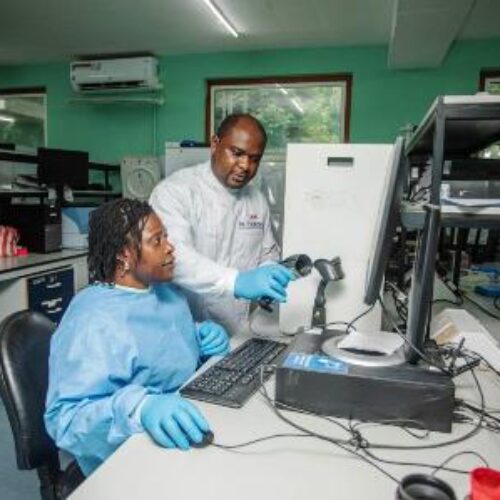U-5 death rate drops by 53% – WHO/UNICEF

…however, 16,000 children still die daily
Globally, under-5 death have dropped by 53 per cent, however, about 16,000 children still die every day before their fifth birthday, says a new joint report from the World Health Organization (WHO), UNICEF, the World Bank and the United Nations (UN). According to the report, about 50% of these deaths occur in sub-Saharan African countries such as Nigeria while 30% occur in Southern Asia.
It noted that a child’s risk of dying before his or her fifth birthday varies greatly around the globe, from 1 in 147 in high-income countries to 1 in 12 in sub-Saharan Africa, the region with the highest under-5 mortality rate in the world. However, UNICEF Deputy Executive Director GeetaRao Gupta said many countries have tripled their rate of reduction of under-5 deaths and this must be acknowledged.
“But far too large number of children are still dying from preventable causes before their fifth birthday and indeed within their first month of life and this should impel us to redouble our efforts to do what we know needs to be done,” she adds.
The U-5 death rate can be further reduced if focus should be on regions with the highest levels – sub-Saharan Africa and Southern Asia, she explained.
“Approximately 45% of deaths among the under-5s occur in the first 28 days of life; 1 million infants die on the day they are born, and nearly 2 million during the first week following birth.Leading causes of death in this group include complications during labor, premature birth, pneumonia, sepsis, diarrhea and malaria. Most of the remaining deaths among the under-5s are tied to under nutrition”, the WHO report said.
It however showed that 62 countries – around a third of the world’s nations – have met the Millennium Development Goal for reducing child mortality by two thirds over 1990-2015, while another 74 have reduced it by at least half.
“Of the 12 low-income countries that have met the Millennium Development Goal, ten of them are in Africa. Overall, the worldwide rate of reduction in child mortality has been accelerating – from an annual rate of reduction of 1.8% during 1990-2000 to 3.9% in 2000-2015”, it noted.
But the push needs to speed up more – especially in sub-Saharan Africa where child mortality is still high – in order to meet the child survival target of the 2030 Agenda for Sustainable Development, the UN Under-Secretary-General for Economic and Social Affairs Mr. Wu Hongbo said.
Dr. Tim Evans, senior director of health, nutrition and population at the World Bank Group, agrees with this. “One area that has seen huge progress in reducing child mortality is the fight against malaria. For example, in Africa, malaria mortality among children has been reduced by 58% since 2000. However, every year, nearly half a million children under the age of 5 still die from malaria, most of them in Africa”, he added.
About author
You might also like
Scientists discover how the body regulates high blood pressure
A breakthrough by British scientists could pave the way for more effective blood pressure drugs, The Mail Online reports. Experts have discovered how the body regulates blood pressure – giving
Lagos to host 7th African conference on ‘One Health and Biosecurity’
As part of efforts to ensure that the Africa continent improves on its preparedness and brace up to the challenges posed by emerging infectious diseases and biosecurity threats, the Lagos
AREF-ROCHE, GENENTECH launch Fellowship program for African scientists
Roche and the Africa Research Excellence Fund (AREF) have launched a new fellowship program to support the next generation of African scientists. The AREFRoche and Genentech Fellowship Program will support







0 Comments
No Comments Yet!
You can be first to comment this post!